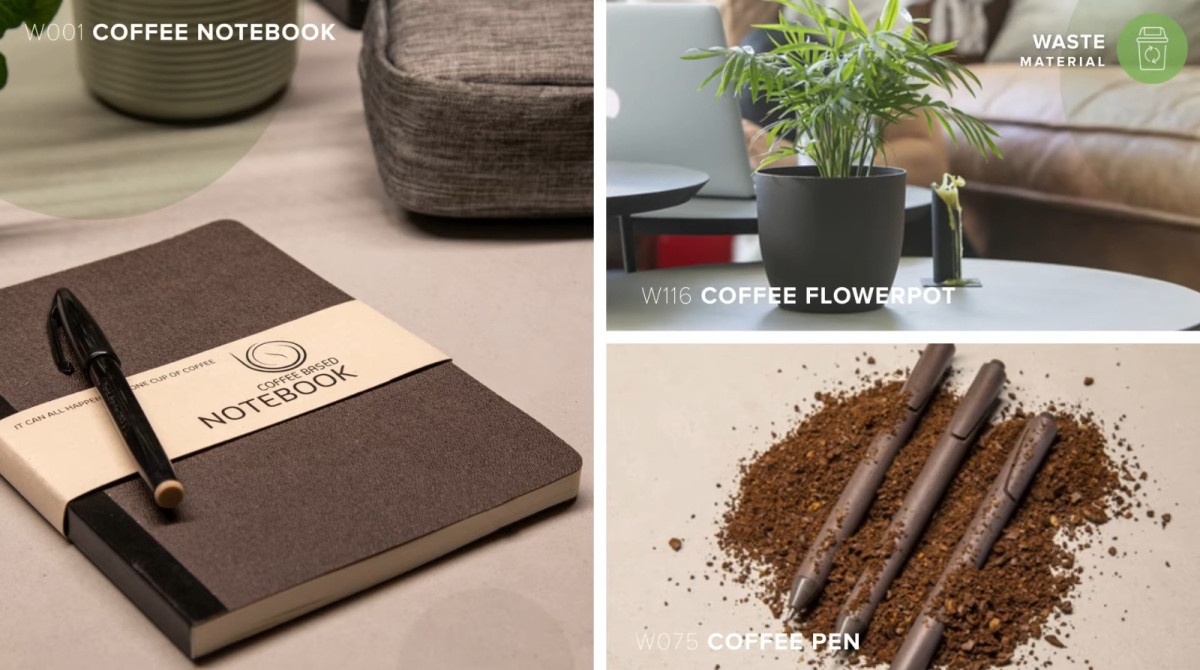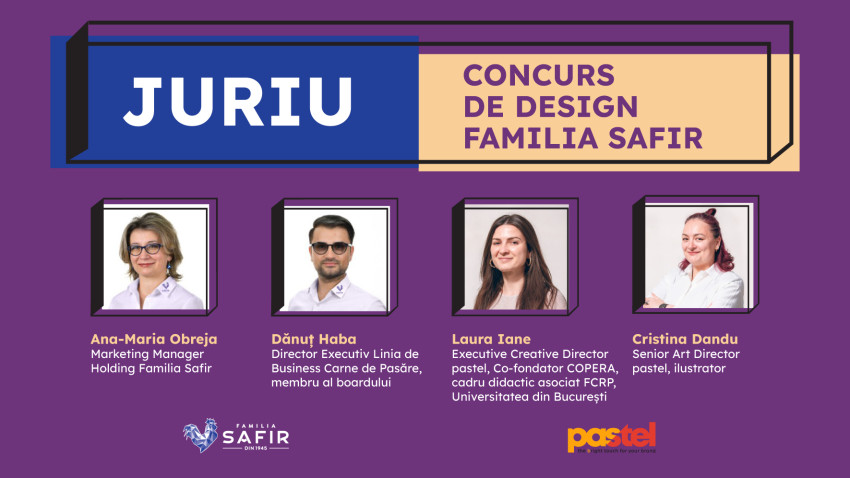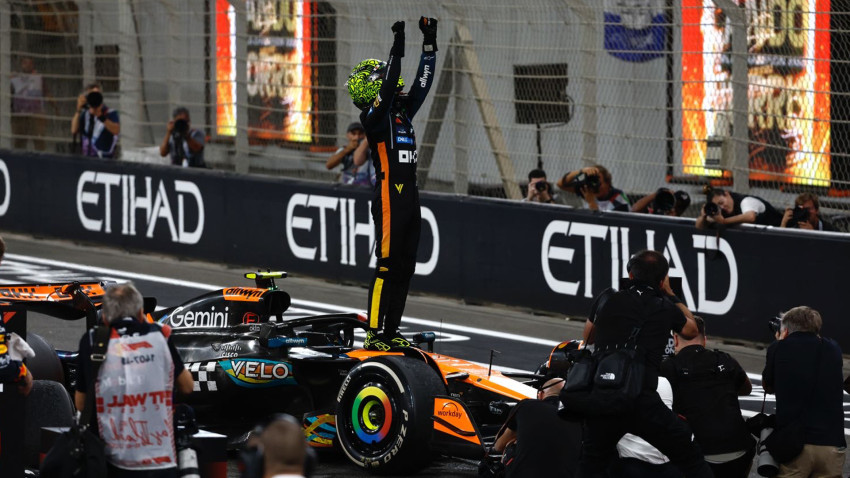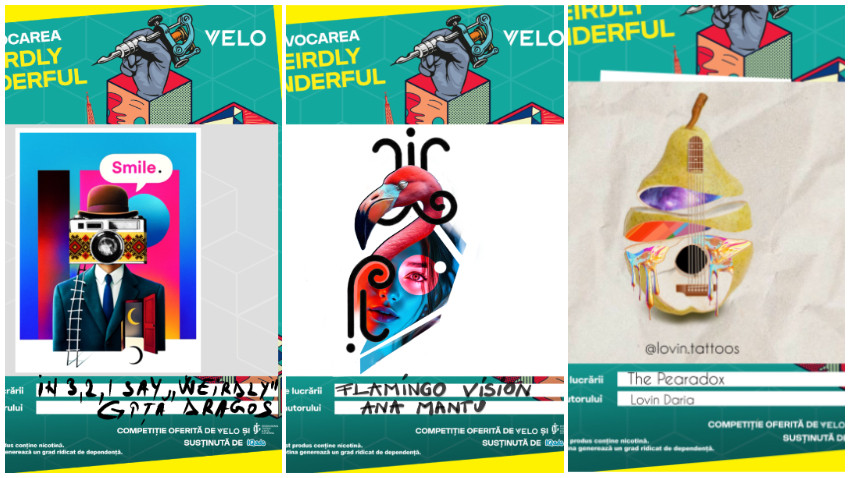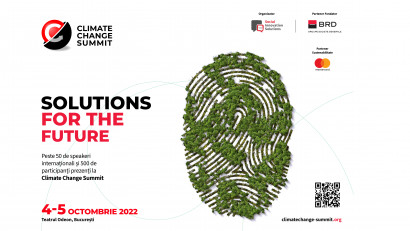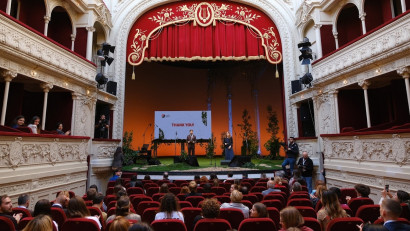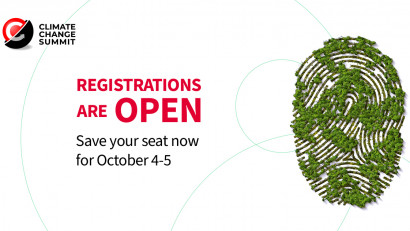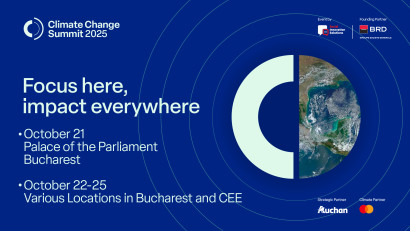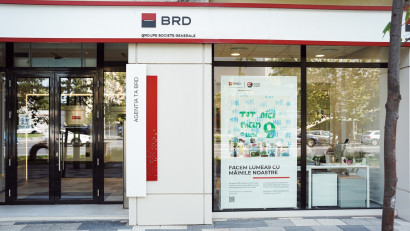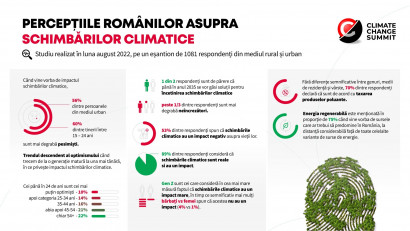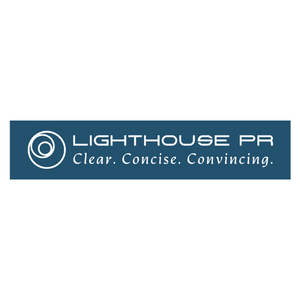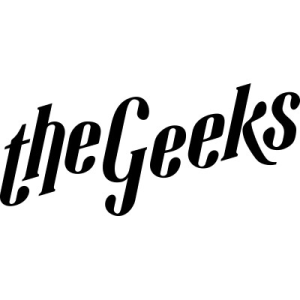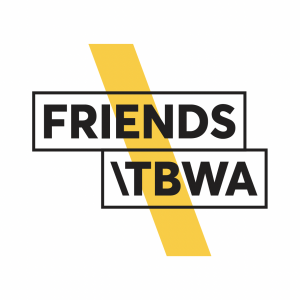In a world grappling with environmental challenges, the advertising industry stands at a crossroads. The decisions made in this industry ripple across society, influencing not only what we buy but also the values we uphold.
As the demand for sustainability surges, businesses in advertising are redefining their roles as both advocates for change and pioneers of circular economy practices. Karin Stoevenbeld-Kreber, a trailblazer in sustainable advertising, shares her transformative journey and three-step model for businesses to minimize their environmental footprint while maximizing their brand presence. Karin is one of the guest speakers at the second edition of Climate Change Summit, a comprehensive event dedicated to solutions for current and future climate change challenges, taking place between October 19-20 in Bucharest (apply to attend).
The passion for promoting a circular economy in advertising
In June 2017, while on a family trip to Vietnam, we found ourselves on a small boat, admiring the beautiful sky but also witnessing a disheartening sight - the water was infested with plastic waste. It was a sea of plastic water bottles, pens, bags, and packaging, and the impact was shocking. My 12-year-old daughter and I were taken aback by the colorful plastics in the water, almost like they were conveying a message. It struck me that I had been involved in producing these materials for over two decades, and it was time for a change. This realization was a pivotal moment.
Upon returning, I began inquiring with Leila, a contact at a pen factory in China, about the possibility of using recycled plastics instead of the virgin materials we had been using. Unfortunately, her response was discouraging - there was no demand for recycled plastics. Frustrated, I returned to the office, grappling with the desire to change but unsure of how to start. It was several months later, during my research on sustainable materials for promotional products, that I stumbled upon a YouTube video featuring David Katz, a charismatic speaker. He was discussing his company, Plastic Bank, which was dedicated to cleaning up rivers in developing nations by encouraging people to collect plastic from the rivers in exchange for compensation.
This idea was a game-changer for us, as it provided a source of recycled plastic pellets for our manufacturing processes.
In just two years, by 2019, we managed to transform our business from being 90% unsustainable to 90% sustainable, effectively doubling our turnover. In that same year, we were nominated as Supplier of the Year in the European Promotional Business. Two years ago, we successfully sold our company to one of Europe's largest suppliers. More significantly, we convinced 22,000 resellers to promote sustainable products to companies. Since then, I've been an ambassador for Clipper Interall, working to raise awareness among companies about utilizing their waste streams to create their promotional products, thereby turning waste into marketing gold.
3 step model for a sustainable advertising industry
Step 1: Elevate Your Approach
To illustrate this point, let me share an experience from last year when I attended the opera. Upon arrival, I was handed a goody bag, which, upon inspection, contained a printed agenda listing all the shows for the entire year. I politely returned the goody bag, explaining that I could easily find this information online. I realized that the materials used in that bag and the printed agenda were derived from trees and virgin plastics, raising the question of whether we were using these resources for a good purpose. A Dutch company, the Dutch Railways (NS), serves as an excellent example of a company that truly understands the value of upcycled products. They created a notebook from former information boards, turning something old into something new. It's essential to consider the quality of promotional materials you provide. Research has shown that investing in high-quality, sustainable products can enhance your brand's perception, with a 35% increase in perceived environmental engagement and moral values compared to companies that don't make such investments. How your company presents itself to the world is crucial.
Step 2: Move Away from Virgin Materials
This step encourages businesses to shift away from using virgin materials. For instance, consider that 90% of the paper used in offices is new, made from virgin materials, resulting in the loss of numerous trees. Recycled paper can easily replace this. Additionally, the most popular promotional item, the logo-imprinted pen, often employs virgin plastics. We have a variety of alternative materials for this purpose. Textiles are another area where there's an abundance of unused waste materials. Frequently, surplus textiles sit in warehouses, no longer suitable due to logo changes or other reasons. I urge companies to reconsider whether they need these raw materials. To provide inspiration, we repurpose leftover textiles to create versatile felt products that can be tailored to a brand's needs.
Step 3: Embrace Your Waste
Every company generates waste, which is unavoidable. What's essential is how this waste is managed. Does it end up in landfills, get incinerated, or can it be given a second life? One example is coffee waste. The waste grounds from coffee, which is often discarded, can actually serve as a valuable raw material. A prominent Dutch bank, ABN AMRO, collects and recycles its coffee waste to create soap for their restroom facilities. The renowned brand Nespresso goes a step further, collecting all their coffee waste to produce pens, coffee cups, and even notebooks made from coffee waste. The highest goal in waste management is achieving a closed loop, where waste is repurposed into products. These steps underscore the importance of reducing waste and promoting sustainability within the advertising industry.
Success stories
Several companies have successfully adopted circular promotional practices, reaping the rewards in both sustainability and brand presence:
1. Nespresso EU: Nespresso repurposes coffee ground waste into promotional products such as coffee pens, coffee notebooks, and coffee cups.
2. ABN Amro Bank NL: ABN Amro creatively utilizes coffee ground waste by incorporating it into soap dispensers in restroom facilities.
3. Dutch Railway NS: Dutch Railway NS transforms old information boards into upcycled notebooks.
4. Football station shops in the EU: Football station shops make use of club textiles to create upcycled felt products.
5. Starbucks in the EU: Starbucks sells the reusable Circular & Co Coffee cup in all its stores. Customers can bring the cup for coffee refills and receive discounts. This cup is made from recycled paper coffee cups.
6. Shell: Shell utilizes upcycled old rubber inner tubes from trucks to create laptop sleeves and cool bags as promotional gifts.
Challenges and solutions for the advertising industry
The advertising industry faces several challenges and obstacles when attempting to reduce its environmental footprint:
1. Lack of Awareness: Many companies still prioritize the use of cheap promotional products, often without considering the environmental impact. Overcoming this challenge starts with raising awareness about the importance of sustainable practices.
2. Behavior Change: Shifting away from using virgin materials and embracing recycled and sustainable alternatives is essential. Companies need to ask themselves what virgin materials they use and where they can make eco-friendly substitutions. They should also explore reusing or upcycling dead stock.
3. Budget Constraints: Companies may perceive sustainable products as more expensive. However, the presentation highlights that, for the same budget, ordering a smaller quantity of high-quality sustainable products can have a more significant impact than purchasing a larger quantity of products made from virgin materials.
Overcoming these challenges requires a shift in mindset. Companies need to recognize that investing in high-quality, sustainable promotional products not only benefits the environment but also enhances their brand perception and social engagement. Sustainability is increasingly becoming a competitive advantage, and making the change now can position businesses as leaders in their markets, ultimately boosting their brand presence.



